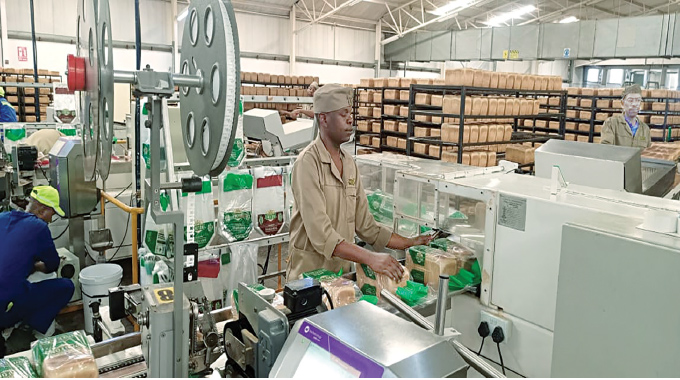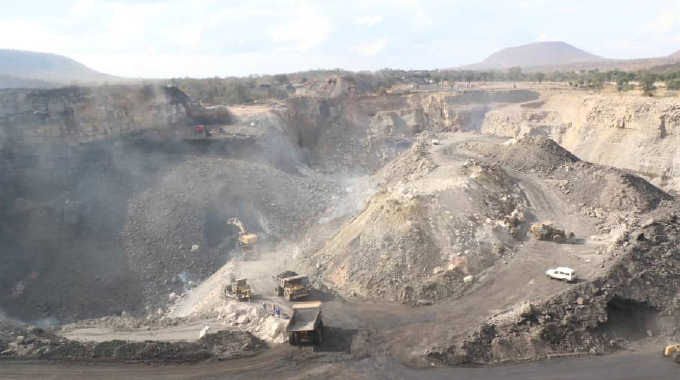Latest developments in tobacco curing technology in Zimbabwe
Harare Bureau
Tobacco curing is an artificial process that creates conducive conditions for the leaf to physiologically ripen. Heat is generated in a furnace or hot box and through a heat exchanger air in the curing structure is heated under prescribed conditions of temperature, vapour pressure and humidity. The most common curing units use coal, a mixture of coal and wood or wood only as the source of fuel.
Most small holder tobacco growers are not connected to the electricity grid and those that are connected frequently experience power outages. Of the estimated 106 000 registered tobacco growers in Zimbabwe, about 80 percent of them are remotely located small holder growers who rely on indigenous wood as their source of curing fuel.
The Rocket barn
The Tobacco Research Board is promoting an improved barn design called the “rocket barn.” In this barn, 4 kg of wood is burnt to produce 1kg of cured leaf compared to the conventional barn which consumes 9kg of wood to produce 1kg of cured leaf. The rocket barn has a capacity to cure 15 000 leaves, equivalent to 0.5 hectares of crop area. The curing cycle is 5 to 6 days in the Rocket barn and in the conventional barn its 7 to 10 days.
Due to its smaller furnace diameter, the rocket barn uses smaller pieces of fire wood thus allowing the farmer to stop cutting down the entire stem of the tree but the branches for curing. The TRB went even a further step to improve fuel use efficiency by improving heat transfer and reducing heat losses, through the use of brick fire boxes instead of flue pipes. Evaluations done indicated that curing temperatures were more stable in the brick fire box heat exchange system compared to flue pipes. Less cyclic temperatures in the barn allow uniform curing and have a bearing on the final leaf quality. Apart from the quality improvements, flue pipes are more expensive to procure and to maintain. The Tobacco Research Board is currently working on developing bigger and energy-efficient barns for medium scale tobacco growers.
Tunnel systems
For medium to large scale tobacco growers, the uptake of tunnel systems is on the increase. In principle, hot air from a single heat source is supplied to tobacco at the mid rib drying stage and is passed through consecutive earlier curing stages. As the hot air passes through the tobacco, moisture is evaporated; air is cooled and becomes more humid as it progresses. This movement and temperature changes necessitate the creation of suitable humidity and temperature gradients. The air is finally exhausted at colouring temperature and is used for conditioning dried tobacco which will be in a different compartment. Tunnel systems result in huge reductions in energy costs (coal and electricity).
On average, the curing ratio is 900g coal to 1kg dried tobacco leaf weight. By hanging tobacco leaves clips placed on trolleys, handling and scrap generation is minimized, also curing is more uniform leading to fewer high quality grades and very little off style grades.
The use of solar power in combustion fans
The small scale farmer is faced with dwindling supplies of fuel wood for curing tobacco whilst coal is currently being made available to them by some contractors. Though having a higher calorific value than wood, coal burns with difficulty and inefficiently without the use of a forced draft. The Tobacco Research Board is currently evaluating the potential of using direct current solar powered fans in driving ambient air into fire chambers for combustion. An efficient combustion system limits the discharge of environmentally unfriendly gases. Preliminary research has proved that the solar system connected to a back-up battery has the potential to cure tobacco at 74 percent combustion efficiency. On average 4kg coal is required to produce 1kg of cured tobacco leaf. The temperature distribution followed the expected curing trend and a normal barn turnaround time of seven days was achieved without compromising the quality of the cured leaf.
Alternative fuel sources
There is great need for an alternative fuel source in order to reduce deforestation related to tobacco curing and support growth and sustainability in the tobacco industry. One such source of energy which has not been fully explored is coal briquettes.The evaluation of the curing potential and efficiency of this product is already in progress at the Tobacco Research Board. Preliminary investigations revealed that the energy efficiency of the briquette is provided by its shape and the number of cylindrical holes through its core. These greatly increase the combustible surface area of the briquette and the air movement through it; providing several benefits over standard coal.
The briquettes do not need to be supplemented with fire wood in order to burn efficiently. An additional advantage of coal briquettes is that they do not require forced air to burn effectively, eliminating the need for electricity or solar power.









Comments